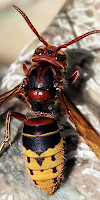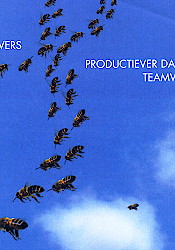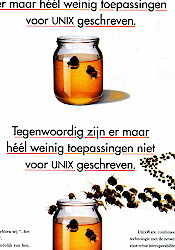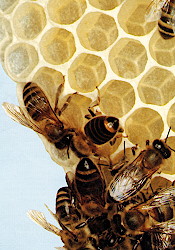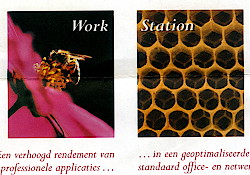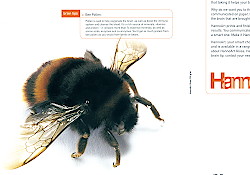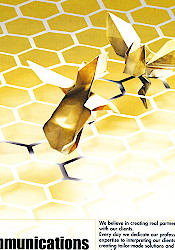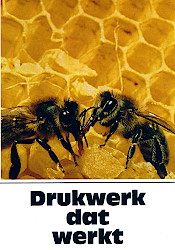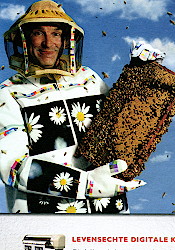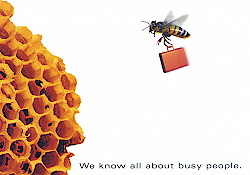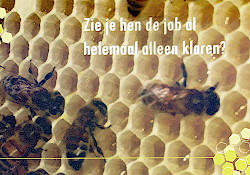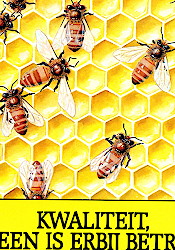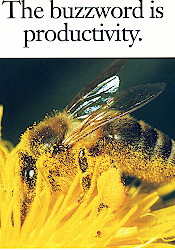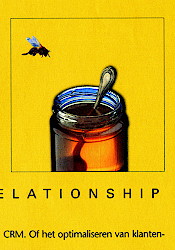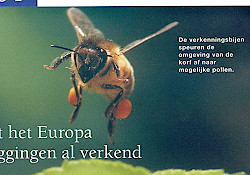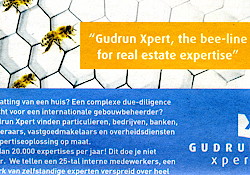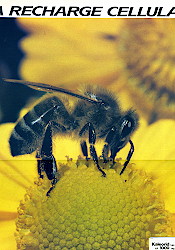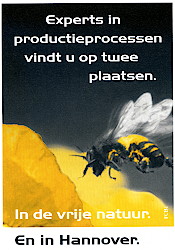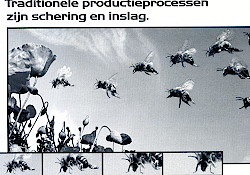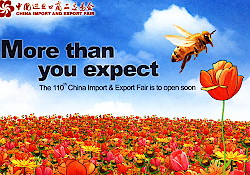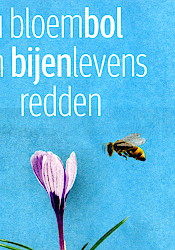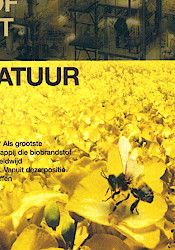Unix is a honeypot
and bumblebees love it
, that is what we learn from this advertisement
from 1993 (№ 2). The story is about UNIX's acceptance as an operating system. The honeypots are the past —
Twenty years ago, very few applications were written for UNIX
—, and the present —
Today very few applications are not written for UNIX
. There is a long text explaining how trustworthy the operating system is, but there is not the slightest mention of
honey, or bumblebees and their behaviour. Why they were chosen is a mystery.
We have another honeypot in № 13, a platform for Customer Relationship Management. Are they implying that CRM is all about honeypots and
buttering someone up?
The Surface Mounted Devices
of № 3 took
Nature as an example
. Brace yourself for the text, in Dutch, which explains it all. The opening paragraph :
A honeycomb — a typical example of the technical perfection in nature. The material and tools can hardly be surpassed. The site appears to have been carefully chosen. And the technology has been around for thousands of years. The biologists talk about instinct. Or evolution.
Then comes the link with the technology
An evolution can also be observed in the field of electronic components: the SMD technology … Just like nature, a complex procedure, …
. Et voila, no better choice possible than a honeycomb with some bees.
They have it right, though, that the working of Nature is complex and not always easily understood.
The honey comb
is also prominently present in № 4 about workstations that will
ensure increased efficiency of your professional applications in an optimized standard and office work environment.
That is why
they are the only workstations worthy of the name
says the title. The bee, working all day for the good of the colony in the hive, stands for you, the employee, doing long days for the good of the company. The environment that makes it all possible is represented by the honeycomb which is indeed optimized and standardized. It's not an approach that leaves me speechless, but it's still much better than the previous, and next, examples.
